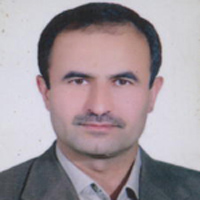Evaluation of SEBAL algorithm for actual evapotranspiration estimating by using Landsat 8 images in multiple land use landscape (Case study: Freeman area)
Present study estimated the large-scale actual evapotranspiration in multiple land use landscape (e.g., Irrigated cultivation, rainfed and pastures) by employing the remote sensing approaches. Measurement of actual evapotranspiration is a difficult process which was calculated as a function of the various climatic and topographical factors for the studied area. Thus, using of models which can estimate the amount of actual evapotranspiration owing to a large and high reliability factor is one of applicable solutions. In recent decades, some methods have been proposed by researchers to determine and measure the actual evapotranspiration. These methods had some limitations and they mainly require a large number of ground-based measurements. Employing the methods based on meteorological stations data from the past has been used as a reference for the estimation of actual evapotranspiration. There are a number of disadvantages of traditional measurement operation such as the lack of sufficient number of measurement points, incomplete meteorological data in many areas, high cost and time consuming of collecting terrestrial information. On the other hand, these measurements are usually based on the weather stations (point based). So, the techniques based on remote sensing data have been developed to tackle these problems. Remote sensing technology has the ability to collect data in large spatial ranges and in short time ranges and the best method to estimate the actual evapotranspiration for areas with difficulty data access or lack of data.
In this study, actual evapotranspiration values were measured by using Surface Energy Balance Algorithm for Land (SEBAL) and Remote Sensing Technique in Fariman area of Khorasan Razavi province. The ground data were used in this study which are included as wind speed, dry temperature, relative humidity, minimum temperature, maximum temperature, sun hours, radiation and evaporation. These parameters were extracted from the automatic and synoptic stations of Fariman. Furthermore, Landsat 8 satellite images were employed to estimate the actual evapotranspiration, that were downloaded from the USGS website in geotiff format. In order to calculate the required parameters, eight days of landsat-8 satellite images (in 2015 and 2016) were used to enhance the proper estimation. In the SEBAL algorithm, the actual evapotranspiration is calculated as the latent heat flux which were determined by using the energy balance equation at the time of the satellite overpass. Because of the large area of study and the impossibility of using accurate evapotranspiration instruments such as lysimeter, eddy covariance and etc., for validation of the results of SEBAL algorithm, the FAO Penman-Monteith standard method was used as the reference. Comparisons among results were considered based on some indexes like R2 and RMSE.
The values of different parameters of the SEBAL algorithm were calculated parametrically. These parameters included as the normalized different vegetation index (NDVI), net radiation flux, land surface temperature, difference between air and land surface temperature, soil heat flux, sensible heat flux and finally actual instant and daily evapotranspiration. Statistical comparison of the SEBAL outcomes with FAO Penman-Monteith method shows that the coefficient of determination is 0.96 and the mean squared error is 0.5 mm per day. These results indicate the high accuracy of SEBAL algorithm in estimating actual evapotranspiration in semi-arid climates with multiple land use landscapes.
In this study, the actual evapotranspiration was estimated for part of the Fariman region with irrigated cultivation, rainfed and pasture lands by using the SEBAL algorithm. This model is a remote sensing method based on physical equations. The developed model which was based on the remote sensing technique estimates the amount of evapotranspiration owing to large - scale areas and areas where meteorological data are not available. The most important limitation of this study was the absence of measured actual evapotranspiration owing to which it was finally tried and examined by the best possible method to validating the estimated values . Therefore, the results obtained from the SEBAL algorithm were compared with the results of the FAO-Penman-Monteith method. Results show that the drift of the values obtained from the SEBAL algorithm was slightly higher than the reference method in some days, and some days it was lower. In total, the accuracy of the final results for the entire study area can be deduced from the accuracy of the results obtained in the considered part of the images and the integrity of the parameters used throughout the images. Finally, by considering the obtained results, it can be concluded that the SEBAL algorithm has reliable outputs for different land use areas and can be used.
- حق عضویت دریافتی صرف حمایت از نشریات عضو و نگهداری، تکمیل و توسعه مگیران میشود.
- پرداخت حق اشتراک و دانلود مقالات اجازه بازنشر آن در سایر رسانههای چاپی و دیجیتال را به کاربر نمیدهد.


